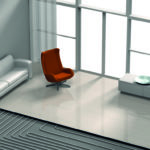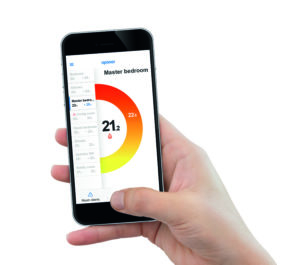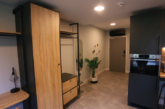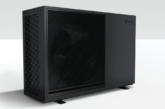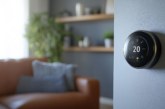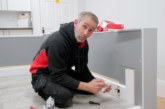How can energy efficient smart technology make for more comfortable homes? Uponor explains all.
The prevalence of smart technology in the home has risen drastically over the last five years. The likelihood of tenants owning smart doorbells, appliances and utensils, or products and gadgets controlled via an app or voice command is becoming ever greater.
However, beyond the well-known consumer focused products, heating and cooling within a building is one area in which smart technology can be used to provide a range of improvements for end-users. These can include increased comfort and productivity as well as reduced environmental impact and energy bills.
Underfloor heating, in particular, is a solution which can be efficiently integrated with smart technology. UFH is deemed an ‘invisible’ solution which achieves either heating or cooling without the need for radiators or electric heaters. Unlike radiators, UFH primarily transfers heat by radiation, meaning warmth distributes evenly across a whole building or room, ensuring a thermally comfortable environment at all times. With heat being transferred in this manner it means the occupant of the property can heat or cool a room in the most efficient and cost-effective way, reducing expensive gas and electricity bills.
What’s more, unlike UFH, as radiators transfer heat mainly via convection currents, they can increase the amount of dust circulating around a room, potentially causing a range of health issues for occupants who suffer from respiratory illnesses.
Combating the cool
In response to the increasing appetite for smart technology and connected buildings, some UFH manufacturers have introduced smart controls for their solutions. Smart controls are integrated directly into an app meaning temperatures can be adjusted from anywhere via a smartphone or tablet, helping tenants achieve the ideal temperature with a simple voice command or screen tap.
Most, including the Smatrix Pulse from Uponor, are also compatible with the Amazon Alexa and Google Home devices, meaning heating and cooling can be managed easily by voice-activated commands.
In addition, this technology provides homeowners with the option to allow installers access rights to their UFH systems. Consequently, diagnostic tests and fixes can be conducted remotely by the installer. As such, occupants no longer have to wait around for a visit and can carry on with their everyday lives without interruption.
It’s clear that smart technology can provide practical solutions to make the lives of a building’s occupants easier and more comfortable. We see this in the case of integrated heating and cooling solutions, such as UFH. Previously considered energy intensive and expensive, advances in technology have enabled efficient heating and cooling solutions to become the norm in our homes, making for happier tenants and more profitable housebuilders.

